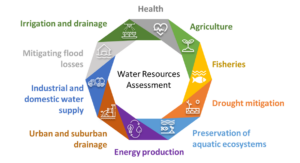Introduction to Desalination
Large-scale desalination projects have become increasingly prevalent worldwide, driven by the growing demand for freshwater resources, particularly in arid regions. These projects involve the conversion of seawater into potable water, offering a potential solution to water scarcity issues. However, their impacts extend beyond the realm of water resource management, affecting agricultural productivity, regional stability, and even the global forex markets. In this article, we will delve into how international large-scale desalination projects can influence forex markets and their implications.
Water Resource Management

Agricultural Productivity

Regional Stability
Forex Market Implications
Case Study: Saudi Arabia
Conclusion
Large-scale desalination projects have far-reaching implications, extending beyond water resource management to influence forex markets, agricultural productivity, and regional stability. These projects contribute to economic stability, reduce import dependency, attract foreign investments, and improve trade balances, ultimately impacting a nation’s currency value.
As countries continue to grapple with water scarcity challenges, large-scale desalination projects are likely to play an increasingly pivotal role in shaping global forex markets. Governments and investors alike should closely monitor the outcomes and implications of these initiatives as they navigate the complex terrain of international finance and water resource management.
Read our latest article on Digital Citizenship
FAQs
- What is desalination?
- Desalination is the process of removing salt and other impurities from seawater, making it suitable for human consumption and irrigation.
- Why is desalination important?
- Desalination is crucial in regions facing water scarcity, as it provides an additional source of freshwater. It helps meet the growing demand for clean water, especially in arid and drought-prone areas.
- What are the common desalination methods?
- The two main methods are reverse osmosis, where water is forced through a semi-permeable membrane to remove salts, and distillation, which involves heating seawater to produce vapor and then condensing it back to liquid.
- Is desalinated water safe to drink?
- Yes, desalinated water is safe to drink. However, the water must undergo additional treatment and testing to ensure it meets quality standards and does not contain harmful substances.
- What are the environmental impacts of desalination?
- Desalination can have environmental impacts such as energy consumption, marine life disturbance during intake and discharge, and brine disposal. However, advancements in technology aim to minimize these effects.
- Where is desalination most commonly used?
- Desalination is often used in regions with limited freshwater resources, such as the Middle East, Australia, and parts of the United States. It’s also employed in emergency situations and on islands without access to abundant freshwater.
- Is desalination cost-effective?
- Desalination can be expensive due to high energy requirements and infrastructure costs. However, advancements in technology and economies of scale are making it more cost-effective over time.
- Can desalination solve global water scarcity issues?
- While desalination helps address water scarcity in specific regions, it may not be a universal solution due to its cost, environmental concerns, and the need for sustainable water management practices.
- How does desalination impact marine ecosystems?
- The intake and discharge of seawater during desalination processes can affect marine ecosystems. Proper environmental impact assessments and mitigation measures are essential to minimize harm to aquatic life.
- Are there alternative methods for addressing water scarcity?
- Yes, alternative methods include water conservation, watershed management, and the development of efficient irrigation techniques. Integrating various strategies is essential for achieving sustainable water resource management.
Click here to read more on Desalination


